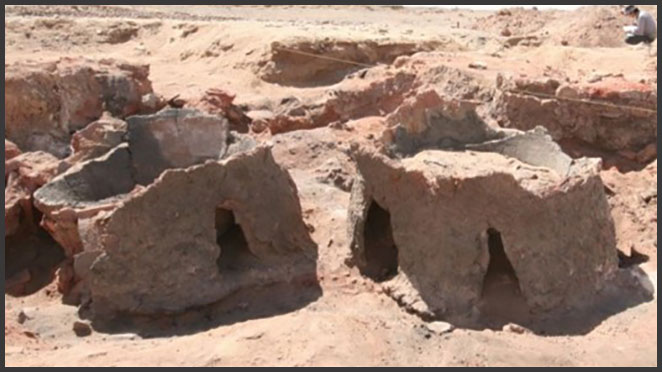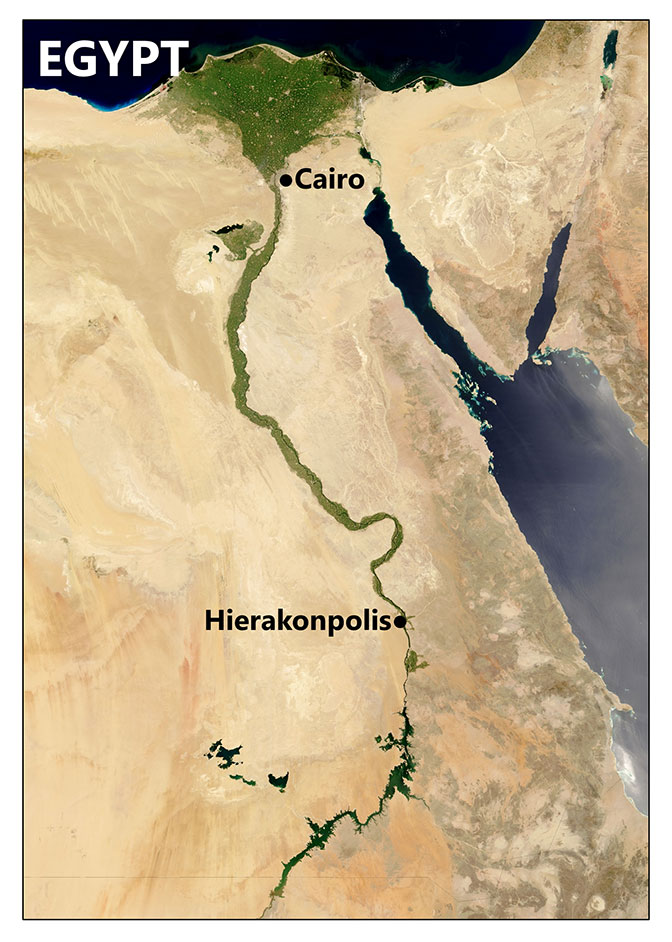Texas Tech Grad, Researcher Find Ancient Egyptians Brewed Sweet Beers By the Vat
By: Karen Michael

Several millennia before Northern Germans began adding hops to beer in the 13th century, Ancient Egyptians brewed beer in giant vats in what is currently known as the world's oldest large-scale brewery in Hierakonpolis, Egypt around 3600 BCE.
An alumnus of Texas Tech, Mohamed Farag, is currently stationed at the American University in Cairo, and is the lead investigator on research into the chemical residue left in the vats excavated in Hierakonpolis, an area about eight or nine hours south of Cairo.
Farag encouraged a former student, Moamen Elmassry, to come to Texas Tech to further his studies, and Elmassry was also involved in the research into ancient Egyptian brews. Elmassry just earned his doctorate in microbiology at Texas Tech this month.
Farag said the recipe of the ancient beer is different than that used by the Germans and modern brewers, who use hops to both give taste to beer and to prevent spoilage. Hops would never grow in Egypt because of the weather, he said.
But scientists discovered that the Egyptian brew contained high amounts of phosphoric acid, which is now used in sodas and juice as a preservative, according to Elmassry.
“I think this is why it survived all those years,” Farag said during a phone interview from Egypt.

Elmassry said the scientists believe the grains of the barley they used had high amounts of phosphoric acid, which may have been released by high temperatures during the brewing process.
“These ancient Egyptians found a way to preserve their beer,” Elmassry said.
He said scientists aren't sure whether the ancient people realized that it was the addition of barley that enhanced the preservation of their beer, but the fact that they could make a product which was so well-preserved meant that they could produce, bottle and distribute large amounts of beer without it spoiling.
The amount of beer produced at the site is what makes it a unique discovery, Elmassry said. Other sites have been found that were even older in the Middle East, such as in the Israel and Palestine area. The ancient Egyptians were brewing enough beer to fill 600 bottles of Budweiser, he said, trying to put it into perspective. Several vats were found during the excavation, he said.
Only the lower parts of five vats excavated in Hierakonpolis were preserved, but the remains still stand between 40-60 centimeters with diameters ranging from 60-85 centimeters. The exteriors of the vat were coated with mud and pottery shards to protect from thermal shock and promote even heating. A high amount of charcoal and ash in the surroundings provided evidence that the vats were heated to high temperatures.
During the time that the vats were constructed, Egypt was in its Predynastic period. Over the years, Elmassry said Egyptians moved further north along the Nile.
While the Hierakonpolis brewery was established around 3600 BCE, the first dynasty of Egypt started around 3100 BCE and Egypt's first pyramid, the pyramid of Djoser, was built between 2630-2610 BCE.
The taste of the Ancient beer was probably different than that of modern beer.
Like Germans added hops to their beer to give it flavor, ancient Egyptians used different fruits – most likely dates – to add a sweet taste.
Although neither Farag nor Elmassry drink beer, they said the ancient beer would likely have been both sweeter and less alcoholic than modern beer.
“This kind of beer, we think it probably had a low amount of alcohol,” Elmassry said.
While Elmassry grew up in Cairo about 15 minutes away from the pyramids of Egypt, he said he didn't think he would be working on research into ancient Egypt as a microbiologist. He described his work on the project as kind of funny in that respect. But he said microbiologists have always been interested in the preservation of mummies, so maybe this was not so unusual.
Farag, also a native Egyptian, said he just happened to be in the right place at the right time when analysis of the vats and the residue was needed.
Discoveries
-
Address
Texas Tech University, 2500 Broadway, Box 41075 Lubbock, TX 79409 -
Phone
806.742.3905 -
Email
vpr.communications@ttu.edu
